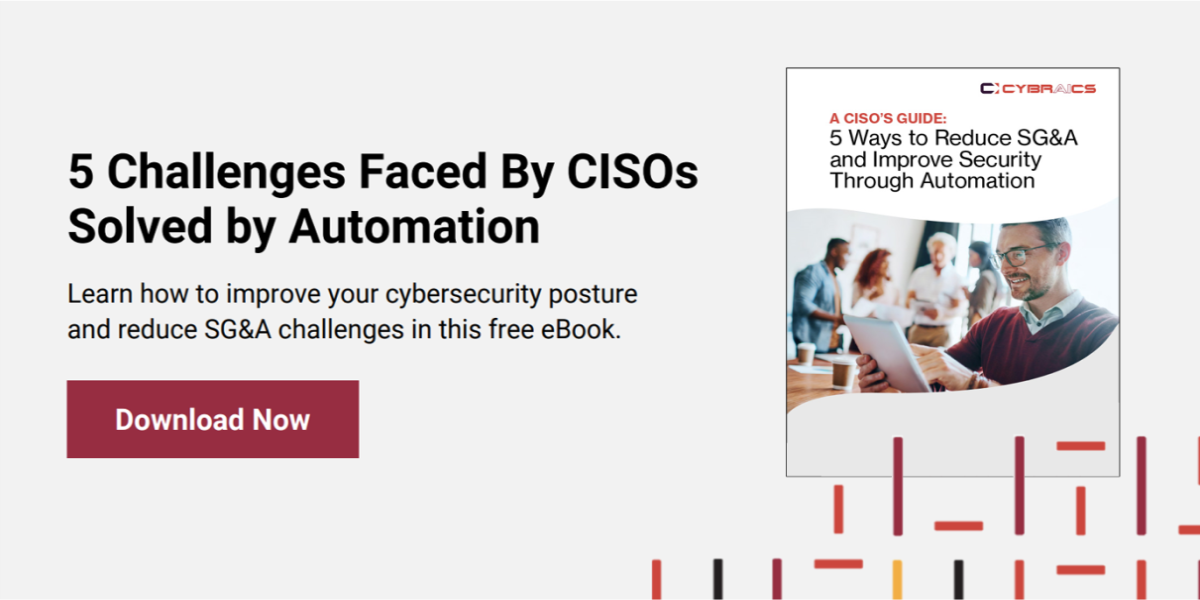As your business grows, you may consider the benefits of a security operations center (SOC) to monitor, evaluate, and defend your organization’s security posture.
But having an on-demand security team is not cheap. Statistics show that the average organization spends $2.86 million annually on an in-house SOC.
But is the investment worth the cost when 53% of businesses rated their SOC’s ability to gather evidence, investigate, and find the source of threats as ineffective?
How organizations rate their SOC’s efficacy correlated directly to the amount spent - as highly-effective SOCs cost an average of $3.5 million versus $1.96 million for the very low-effectiveness SOCs.
Clearly, cutting corners to save money on a SOC isn’t the solution. Luckily, there’s a way to balance an affordable SOC team with the depth of security you need: a SOC as a Service (SOCaaS) powered by automation.
The True Cost of In-House Cybersecurity Teams
Research reveals that the average cost of a data breach in the United States in 2021 hit an all-time high of $8.64 million — making the need for a security team even more critical than ever.
But running an effective and highly proficient SOC is costly, both in terms of time and money. For starters, you need security specialists ready to work around the clock. An effective threat detection and response team lies at the very heart of every organization’s security. They must be on alert 24/7 to detect and prevent threats and enable a quick response if an attack bypasses security control. Unfortunately, with the global shortage of qualified IT staff, it is difficult to find a small group of people to do the job, while employing a whole team is almost impossible.
Suppose you do manage to find several cybersecurity specialists. In that case, you still need to account for an average annual salary of over $102K per analyst - and that hiring and training such a person takes almost a year. It is a difficult choice to invest in building out your own SOC when a typical analysts’ tenure is only slightly longer than two years. Moreover, the cost-effectiveness of an internal SOC shrinks because the people responsible for hiring and training new analysts admit the task takes them away from their other responsibilities - namely, protecting your organization against cyber threats. Add it all up, and you can see why having an in-house SOC team is often not worth it.
The Benefits of Moving From In-House to a SOCaaS Powered By Automation
In-house security teams can inhibit your overall scalability. Costly salaries and the lack of qualified candidates prevent you from building your team and working on your cybersecurity. But a solution is neither as complicated nor as unreachable as you may think.
Let’s look into the benefits of using SOCaaS powered by automation:
1. A SOCaaS can improve your SG&A expenses by reducing the reliance on specialized and often more expensive employees.
When 76% of cyberattacks take place outside of regular working hours, you need broader coverage. With a SOCaaS, you get 24/7/365 coverage and access to expert staff to fill in after-hours and on weekends that allow you to extend your coverage cost-effectively. It also automates human resource-intensive resources, like alert and log management, investigation, and correlation.
2. A SOCaaS eliminates redundant security technologies.
Research shows that organizations use an average of over 45 different security tools. Many are duplicative, some don’t work well together, and all require people to monitor them. The ideal platform leverages automation to execute log management, SIEM, threat intelligence, security operations and analytics — and gathers them all in one solution.
3. A SOCaaS makes your costs predictable, allowing you to plan optimally.
When you leverage a SOCaaS powered by an Autonomous SIEM, you know your costs straight away, and you can plan them in your annual budget. In addition, your SOCaaS outsourcing can provide better accounting flexibility as OPEX. Moreover, using such a solution improves your time to value because an autonomous SIEM solution can be up and running in a day — you don’t need to waste weeks or even months on training or onboarding.
More Ways to Reduce SG&A
There are plenty of ways to reduce your SG&A expense and improve your security posture, all through the power of automation.
In our 5 Ways to Reduce SG&A ebook, we’ll explore how your organization can solve headcount issues, qualified skills gaps, scalability restrictions, accuracy challenges and improve ROI by leveraging an automated threat detection and response solution. Download your complimentary copy today!

